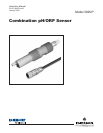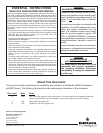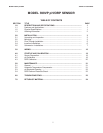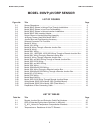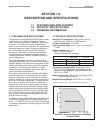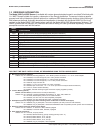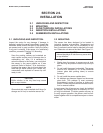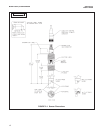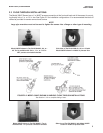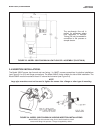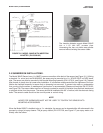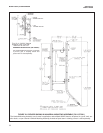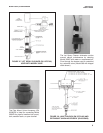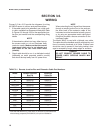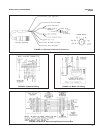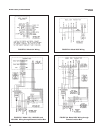
MODEL 399VP pH/ORP SENSOR SECTION 2.0
INSTALLATION
SECTION 2.0.
INSTALLATION
2.1 UNPACKING AND INSPECTION
2.2 MOUNTING
2.3 FLOW-THROUGH INSTALLATIONS
2.4 INSERTION INSTALLATIONS
2.5 SUBMERSION INSTALLATIONS
2.1 UNPACKING AND INSPECTION.
Inspect the carton for any damage. If damage is
detected, contact the carrier immediately. Inspect the
hardware. Make sure all the items on the packing list
are present and in good condition. Notify the factory
if any part is missing. If the sensor is in satisfactory
condition, proceed to Section 2.2, Mounting.
NOTE
Save the packing cartons and materials as
most carriers require proof of damage due to
mishandling, etc. Also, if it is necessary to
return the sensor to the factory, you must pack
the sensor in the same manner as it was
received. Refer to Section 7.0 for instructions.
If storing the sensor, the vinyl boot should be
filled with pH buffer solution (pH 4 buffer rec-
ommended) and replaced on sensor tip until
ready to use.
CAUTION
Buffer solution in the vinyl boot may cause
skin or eye irritation.
NOTE
Glass electrode must be wetted at all times (in
storage and in line) to maximize sensor life.
2.2 MOUNTING.
The sensor has been designed to be located in
industrial process environments. Temperature and
pressure limitations must not be exceeded at any
time. A pertinent caution label is attached to the sen-
sor. Please do not remove the label. See Figure 2-1.
CAUTION
Internal electrolyte fill solution may cause skin
or eye irritation.
Mounting Guidelines:
1. Shake down the sensor to remove any air bub-
bles that may be present inside the tip of the pH
glass.
2. Do not install the sensor horizontally. The sensor
must be at a minimum of 10° off the horizontal
(sensor glass bulb pointing down) to ensure
accuracy.
3. Do not install the sensor upside down.
4. Air bubbles may become trapped on the sensor
glass bulb. This problem is most commonly
encountered in areas of low flow or during cali-
bration. Shake the probe while immersed in solu-
tion to remove bubbles.
In most cases, the pH sensor can simply be installed
as shipped, and readings with an accuracy of ± 0.6
pH may be obtained. To obtain greater accuracy or
to verify proper operation, the sensor must be cali-
brated together with its compatible analyzer or trans-
mitter.
3



